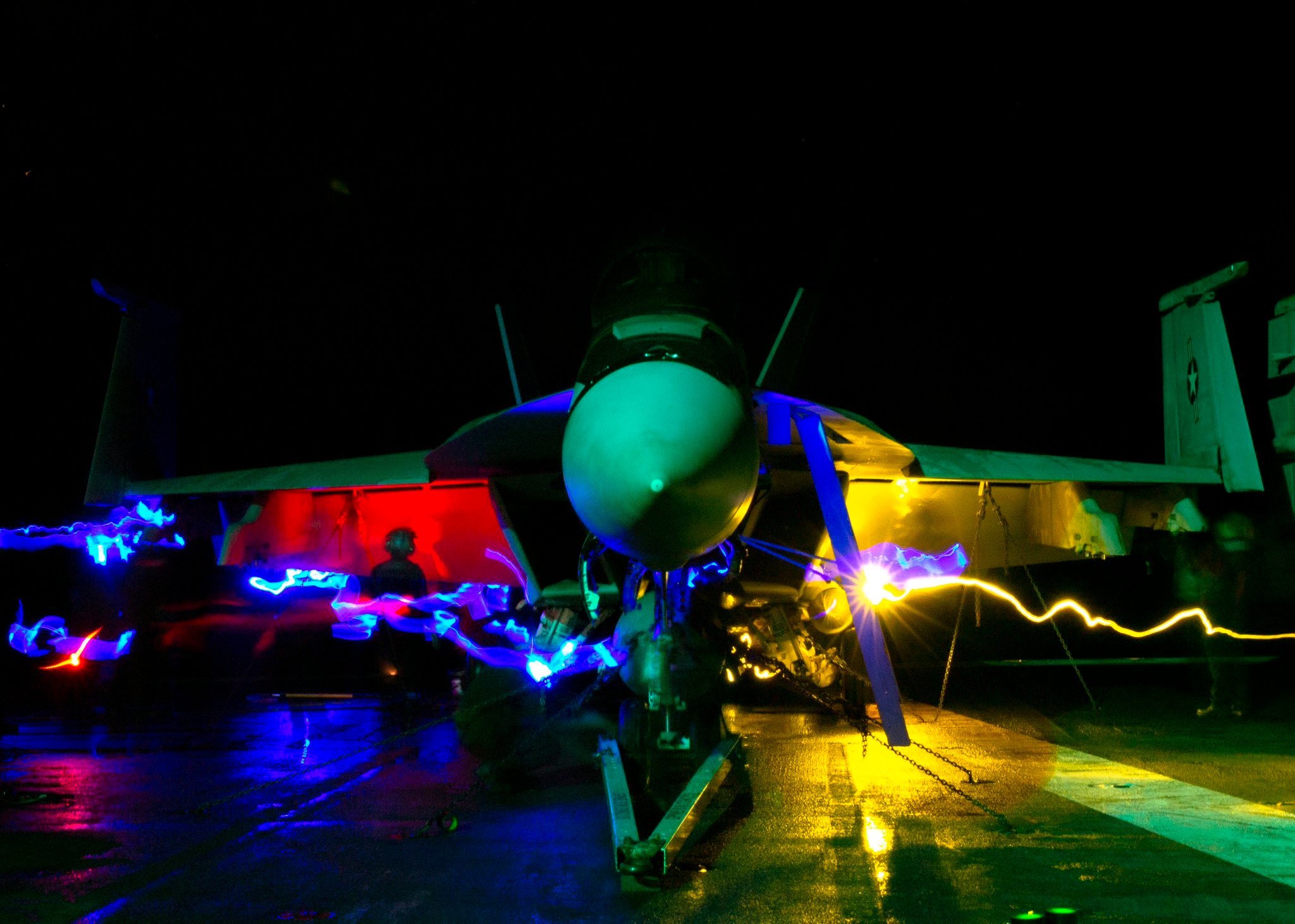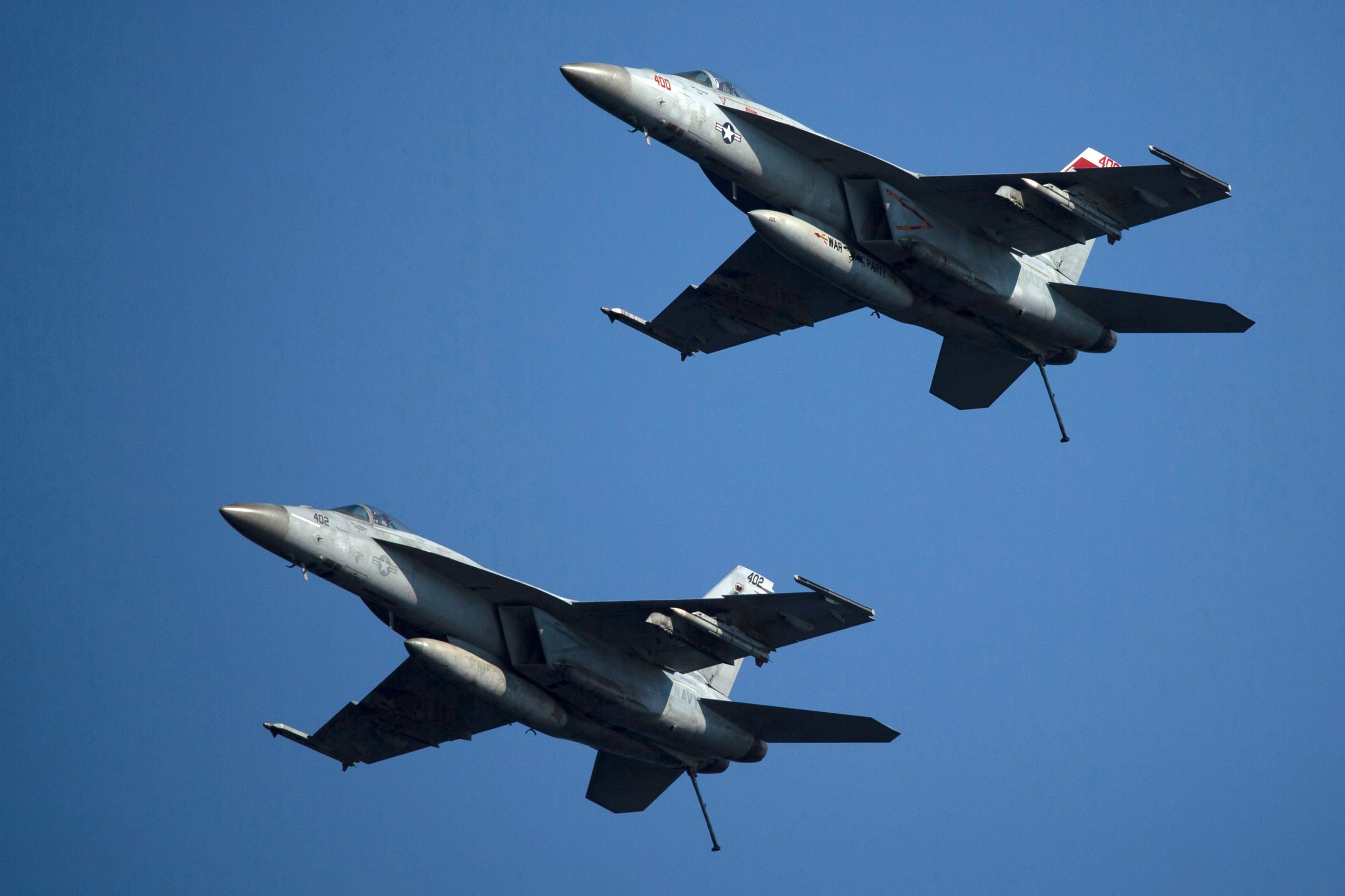
Negotiations over the Navy’s last batch of Super Hornets have stalled due to the growing price tag for the fourth-generation aircraft, USNI News has learned.
The contract for the Navy to buy the final 20 F/A-18 E/F Super Hornets from Boeing is at a stand still.
“The Navy continues to work with Boeing on the contract for the 20 congressionally-added Super Hornet aircraft. Ongoing contract negotiations cannot be discussed at this time,” Capt. Michael Burks, the program manager for the F/A-18 and EA-18G office at Naval Air Systems Command, told USNI News in a statement.
In prior fiscal years, Congress appropriated and authorized about $1.15 billion, which with the Navy’s estimate of $55.7 million per aircraft, means the service could buy 20 Super Hornets.
“We are committed to ensuring warfighter readiness and supporting our U.S. Navy customer. We continue to work with the U.S. Navy on a path forward,” a Boeing spokesperson told USNI News in an email.
But Boeing’s estimate for the Super Hornets has become more expensive, with the price tag approaching the cost of an F-35C, USNI News understands. For the latest Lot 15 through 17 contract with Lockheed Martin, the cost of an F-35C is about $102.1 million, Breaking Defense reported earlier this year.
Several years ago, the Navy sought to end the Super Hornet line early so it could put that funding toward developing the Next Generation Air Dominance Program and other aviation needs. But Congress, concerned over previous issues with the F-35 Lightning II Joint Strike Fighter Program, added more Super Hornets in both Fiscal Year 2022 and FY 2023.
“That contract was for 20 aircraft. It’s not going to be 20 aircraft, because we’ve taken so long to get to a final determination on that contract. The number of dollars will not go as far, but those aircraft need to be built,” Rep. Rob Wittman (R-Va.), vice chair of the House Armed Services Committee and chair of the tactical air and land forces subcommittee, said earlier this month at the U.S. Naval Institute’s Defense Forum Washington.
The stall in negotiations comes as Boeing’s defense business struggles. The defense sector’s 2023 losses were higher than in any single year between 2014 and 2021, Reuters reported in October.
In an interview with USNI News this week, Wittman said that while the Navy and Boeing have made progress on negotiations over the technical data package, the high cost of the aircraft remains a problem.
“We know through that period of time there’s been inflationary pressure. We’ve seen that throughout the Pentagon. So that leads one to the point of a number that would be less than 20 in the final purchase agreement,” Wittman told USNI News.

“The longer it goes the more problematic I think it becomes,” he said of the negotiations.
The goal was for the additional 20 Super Hornets – 12 purchased in FY 2022 and eight in FY 2023 – to deliver in the 2025 timeframe, but because of the ongoing contract negotiations, Wittman said that’s likely not achievable.
Making the case against the Congressional plus up a few years ago, Navy officials questioned the viability of the Super Hornets and whether the aging airframe could stand up against future threats as far out as the 2050s, when the newest jets would still fly.
The fourth-generation Super Hornets are based on the 70s-era McDonnell Douglas F/A-18 Hornet design. When the Navy tried to end the Super Hornet line after FY 2021, lawmakers were concerned about ending a hot production line to pursue new technology.
Should the Navy want to buy F-35Cs instead of the Super Hornets, the service would need to ask Congress to reprogram the money, Wittman said. Lawmakers added the Super Hornets because the F-35Cs were not getting built fast enough at the time, but Wittman acknowledged that the circumstances may have changed.
“We are not going to initiate that on our own. The reason Congress did the 20 was as a gap measure to make sure that we had these aircraft to keep these air wings fully operationally capable,” Wittman said.





